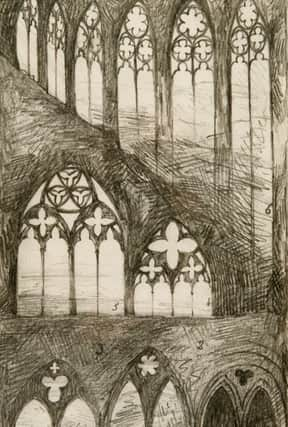A new exhibition influenced by Ruskin


Craft has been making something of a comeback over recent years with the realisation, long-overdue, that traditional methods of making may well be in danger of disappearing if they are not encouraged and supported, while craft techniques are also increasingly being incorporated into mainstream art.
This notion is very much at the heart of the latest exhibition at Sheffield’s Millennium Gallery, In the Making: Ruskin, Creativity and Craftsmanship, opening tomorrow. Victorian artist and critic John Ruskin, who also wrote extensively on social reform, believed that that the act of creativity was the perfect coming together of the human spirit, skill and material. The Ruskin Collection – which includes visual and decorative art, natural history specimens and manuscripts – has been housed in Sheffield since the 1880s and belongs to the Guild of St George, an organisation founded by Ruskin in 1871 with the aim of making the world a better place for humankind.
Advertisement
Hide AdAdvertisement
Hide Ad“The exhibition is looking at Ruskin’s ideas on making and the process of creativity and at the relevance of those ideas today,” says Alison Morton, Exhibition and Display Curator at Museums Sheffield. “There are items from our collection and we also have loans from the V &A, National Galleries Scotland and Arts Council England to show some of the most exquisite examples of man making beautiful things from raw materials. Ruskin felt that these beautiful objects came from the artists’ skill and imagination and he also wanted to galvanise the idea of craftsmanship as a way of providing an income. ”
To that end in 1883, Ruskin set up the Ruskin Linen Industry in the Lake District which funded the training of women in lace-making. “He recognised that women needed financial independence,” says Morton. “He allowed the women to use his name and the industry continued up to the 1920s.” There are several examples of Ruskin lace in the exhibition as well as some of Ruskin’s own work; amongst the other works on display will be Albrecht Durer’s Knight Death and the Devil and John Piper’s Stained Glass Window Sketch, alongside pieces by contemporary artists such as Grayson Perry and Tracy Emin. In addition there are four specially commissioned works inspired by the Ruskin collection, including a piece by two Sheffield-based artists, wood craftsman Henk Littlewood and painter Mir Jansen. “It is an immersive piece, a shelter-like structure, which explores a range of Ruskin’s ideas and their significance today,” says Morton. “Another is Harriet Popham’s huge floor vinyl piece that references the architecture of Sheffield and the greening of the city.” On display in the gallery’s Craft & Design space will be the work of artists and craftspeople who create by stitching, sewing, weaving and dyeing. “There can be a real division between what is considered to be art and what is craft, but today those boundaries are quite blurred,” says Morton. “So you get someone like Grayson Perry, for example, who is using traditional craft techniques and materials to make his work which is defined as art, and Tracy Emin who has used sewing in a lot of her pieces. From Ruskin’s point of view there was no boundary between art and craft – he would have put them all together because they are all about endeavour and the human ambition to create something beautiful.”
January 23-June 5.